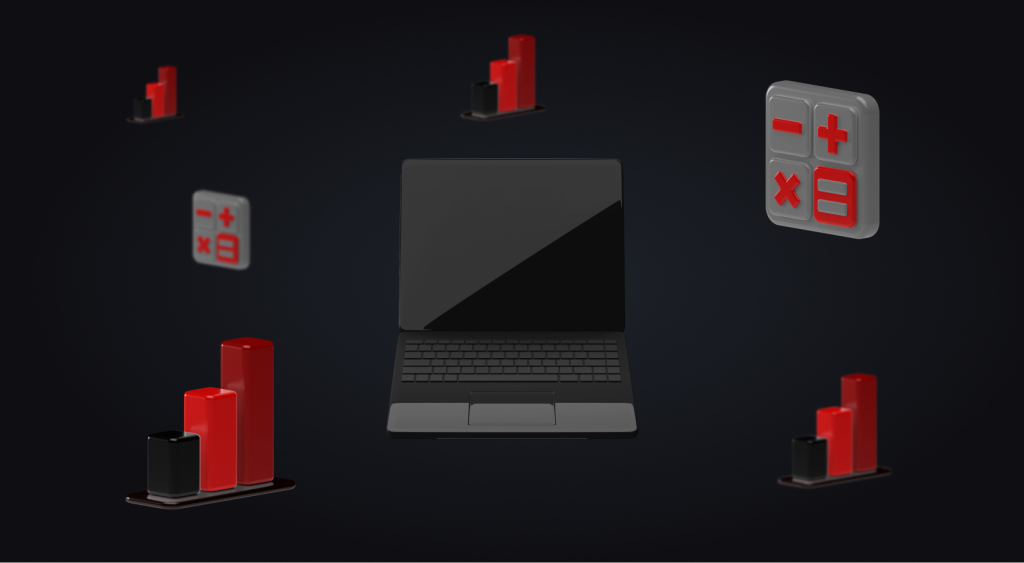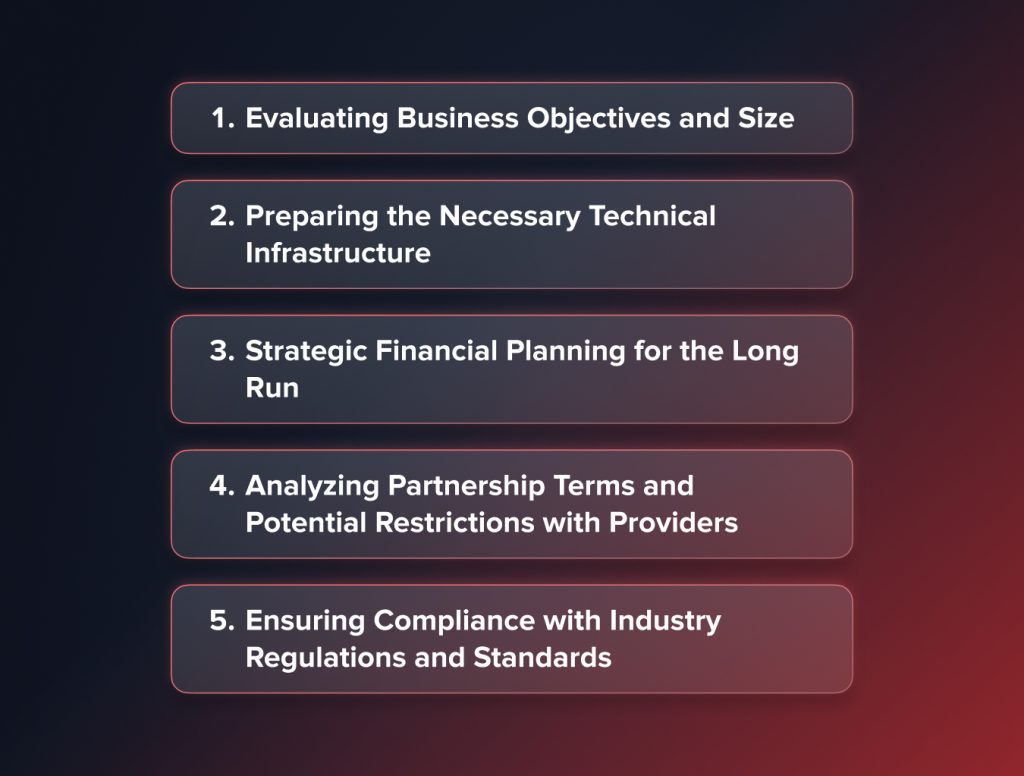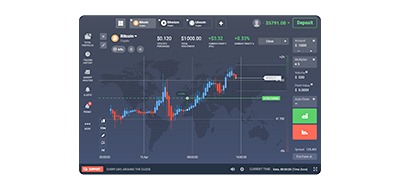Back

White Label
What is an MT4 White Label, and How Much Does it Cost?

Written by:
Demetris Makrides
read
Published:
May 6, 2024Updated:
May 16, 2024views
Table of contents
Over the past 15 years, MetaTrader 4 (MT4) has been the go-to platform for Forex trading. Its strong presence across the industry shows its worth. However, getting a White Label MT4 has become more difficult these days because of new legal requirements. Even though MT4 is well-liked, it may not be the best choice now for new brokers, especially from countries with less strict regulations. If you want to establish your own brokerage business, it’s worth taking a closer look at platforms like Quadcode. It can save you money and resources and serve as a viable alternative given the current MT4 white label requirements. But if your heart is strictly set on MT4, this guide is for you.
The New MT4 Requirements
The latest news in the Forex market indicate that MetaQuotes has tightened the rules for brokers wanting a White Label MetaTrader. This is particularly problematic for new brokers in countries like Saint Vincent and the Grenadines or Vanuatu, known for their FX investments but with little regulation.

While MT4 has an excellent reputation, times are changing. New platforms offer similar features without the hard-to-meet rules. Always watch the industry’s changes and make the best choice for your needs.
Understanding MT4 White Label Solutions
The term “White Label” might sound complex for those new to Forex trading platforms. The MT4 White Label is a tailored version of the well-known MetaTrader 4 platform. It’s adjusted, given a new brand, and then offered to businesses, letting them give trading services their own touch.
At its heart, the MT4 White Label retains the core functionalities that have made MT4 the gold standard in Forex trading. However, when contrasted with a full-license MT4, certain differences rise to the fore:
- Features: A full-license MT4, given its comprehensive nature, boasts an exhaustive suite of features – from advanced trading capabilities to extensive back-office tools. On the other hand, an MT4 White Label solution, while encompassing the essential features, might not offer the entire range. This allows businesses to opt for functionalities most relevant to their operations, often at a fraction of the cost.
- Accessibility: MT4 White Label solutions typically provide a seamless onboarding process for businesses, ensuring that they’re up and running swiftly. Contrarily, setting up a full-license MT4, given its broad feature set, might necessitate a more extended setup period.
- Customizability: The allure of the MT4 White Label often lies in its adaptability. Businesses can tailor the interface, tools, and even certain features to align with their brand’s ethos and client needs. A full-license MT4, while rich in functionalities, might not offer the same extent of customization, especially from a branding perspective.
Among all MT4 users, these smaller businesses greatly benefit from White Label solutions. They get a high-quality trading platform without the big price tag, helping them compete with bigger, more established market players. For them, it’s more than just a platform; it’s a growth and market entry tool.
Key Advantages of MT4 White Label
The MT4 White Label, often heralded as a strategic choice for many emerging businesses, brings forth many advantages that reshape how businesses approach Forex trading. Let’s consider a few of such benefits:
Cost-effectiveness
Perhaps the most pronounced advantage is the cost savings. Developing a proprietary trading platform from the ground up can cost upwards of $250,000, not to mention the long developmental times and potential hiccups along the way. MT4 White Label offers a workaround. For a fraction of the cost, businesses can tap into the power and prestige of the MT4 brand, sidestepping the pitfalls and expenses of creating an entirely new platform.
Customization and Branding Opportunities
An astute business recognizes the imperative of brand consistency across all touchpoints. The MT4 White Label shines in this regard. Beyond its functional prowess, it allows businesses to tweak the interface, tools, and even specific functionalities to mirror their brand narrative. Such a deep level of customization ensures that clients and traders are immersed in a branded experience, fostering trust and allegiance to the business.
Rapid Market Entry
In the fiercely competitive Forex landscape, time is of the essence. Delayed market entries can translate to missed opportunities. The MT4 White Label, with its swift setup and deployment capabilities, ensures that businesses aren’t left playing catch-up. With a white label solution, businesses can enter the market in as little as two weeks, compared to the six months it might take without it. This speed allows them to establish their market presence promptly, capitalizing on emerging market trends and client demands.
Advanced Trading Tools
Some may mistakenly believe that using a white label solution means getting fewer tools and features. But with the MT4 White Label, that’s not the case. Companies get a range of top-notch trading tools, from analysis functions to automatic trading features, ensuring their clients have the best Forex trading. The best part? They get these features without the high costs usually tied to such advanced tools.
Continuous Technical Support and Updates
Trading platforms aren’t static entities; they evolve in response to market innovations and technological advancements. With the MT4 White Label, businesses aren’t left navigating these waters alone. Continuous technical updates ensure that the platform remains at the cutting edge, while dedicated support guarantees that any potential issues are addressed promptly, minimizing disruptions.
Scalability
Businesses are dynamic, especially start-ups and small and medium-sized enterprises (SMEs). Their needs today might differ markedly from their needs a few years later. The MT4 White Label offers robust scalability options, allowing businesses to expand the platform’s capabilities in sync with their growth. Whether it’s accommodating a surge in users, integrating new tools, or expanding into new markets, the MT4 White Label is poised to evolve in tandem with business aspirations.
The Financial Perspective: Breaking Down the Costs
Understanding the costs of adopting the MT4 White Label platform is paramount for businesses, especially for those diligently keeping an eye on their bottom line. A proper financial analysis not only ensures budgetary adherence but also underscores the true value the platform brings to the table. Let’s delve into the various cost components and what they entail.
- Initial set-up fees: A major chunk of the MT4 White Label expense comes at the inception – the setup. This fee is essentially the price for acquiring a ready-to-launch platform that’s equipped with state-of-the-art trading tools. Remember, you’re not just paying for software; you’re paying for a renowned brand, its prestige, and the quality assurance it brings along. While it might seem significant, comparing this cost against developing a proprietary platform from scratch offers a more tolerable perspective.
- Recurring monthly/annual fees: Beyond the initial setup, businesses should earmark funds for the recurrent costs. These typically encompass license renewals, access to ongoing technical support, and updates. They also may include fees for accessing liquidity providers and other third-party services that the platform integrates with. Understanding these recurring expenses is pivotal to ascertaining the platform’s return on investment (ROI) over the long haul.
- Potential add-on costs: The MT4 White Label is renowned for its customization capabilities, but these come with associated costs. Businesses might incur additional charges if they opt for advanced customization, integration of specific tools, or unique updates. The same goes for integrating the platform with other systems or tools, which might demand specialized development efforts. Such expenses, though optional, are paramount for those seeking a highly tailored trading environment.
- Financial benefits compared to a full MT4 license: While the costs mentioned might paint a picture of a considerable financial outlay, it’s critical to weigh these against the alternative – securing a full MT4 license. While exhaustive in its offerings, the latter comes with a hefty price tag of $100,000 for each MT4 license, often making it prohibitive for startups or SMEs. Additionally, the infrastructure, human resources, and continuous updates demanded by a full license can lead to burgeoning costs over time. In contrast, the MT4 White Label provides similar functionalities and prestige but at a fraction of the price.
- Hidden costs to be vigilant about: Like any financial undertaking, it’s crucial to watch for costs that aren’t immediately apparent. This could range from additional training or consultation costs to unforeseen expenses arising from regulatory changes or platform adjustments. Being astute about the terms of service, understanding potential additional costs, and maintaining open communication with the service provider can help steer clear of financial surprises.
How Much Does Setting Up an MT4 White Label Truly Cost?
Factoring in the aforementioned expenses, one might wonder about the consolidated cost of setting up an MT4 White Label. As indicated, the total cost depends on the platforms requested: Desktop, Mobile, and Web. Typically, the financial outlay for establishing a white label Forex fluctuates between $10,000 and $50,000. This bracket accounts for the initial setup and the monthly fees for using the broker’s technology and suite of services.
Yet, this figure doesn’t capture the complete financial landscape. To get a holistic view, businesses should also factor in additional expenses. This includes marketing undertakings essential for standing out in a crowded marketplace, legal fees to ensure contractual adherence and iron-clad operations, and costs tied to regulatory compliance – an indispensable aspect for those in the Forex world. All these components, while not directly related to the MT4 White Label, are vital cogs in the machinery of setting up and successfully running a trading business.
KEY TAKEAWAYS:
- Cost-Effective Platforming: The MT4 White Label provides a gateway into Forex trading without the massive investment of building a unique system. It balances affordability with premium features, making it ideal for startups and SMEs.
- Tailored Branding and Swift Market Entry: MT4 White Label isn’t just software; it’s a brand enhancer. Customizability ensures brand consistency, and its rapid deployment speeds up market penetration.
- Navigating the Partnership: Engaging with MT4 White Label is more than a transaction; it’s a partnership. Understanding the long-term financial implications, technical requirements, and regulatory compliance is crucial to reap its full benefits.
Essential Considerations for Businesses
As more businesses consider the MT4 White Label, it’s essential to make sure it’s the right choice for them. Deciding to use this platform should be based on careful thinking aligned with the company’s values, goals, and abilities. Let’s look at these critical factors:

Evaluating Business Objectives and Size
Every business, regardless of size, possesses unique goals. Be it market penetration, diversification, or simply gaining a competitive edge, these objectives should be the North Star guiding any significant investment, including the adoption of MT4 White Label. For instance, a startup aiming for rapid market entry with limited capital might find the White Label solution more aligned with its needs than a well-established entity looking for exhaustive features irrespective of the price tag. The size of the business, both in terms of financial muscle and operational scope, plays a pivotal role in this evaluation. Understanding where the business stands today and where it aspires to be tomorrow can aid in making an informed choice.
Preparing the Necessary Technical Infrastructure
Adopting the MT4 White Label isn’t merely a financial endeavor; it’s a technological one, too. Ensuring that the existing technical infrastructure is primed to support and integrate with this platform is paramount. This might entail upgrading servers, ensuring robust cybersecurity measures, or even training the IT team to proficiently handle the platform. A mismatch here can lead to operational hiccups, potentially undermining the very advantages the platform promises.
Strategic Financial Planning for the Long Run
While the immediate costs of the MT4 White Label are often the spotlight, it’s the long-term financial implications that can truly make or break the decision. This encompasses the recurrent expenses, potential costs of customization, and even expenses tied to scaling the platform as the business grows. Creating a multi-year financial projection factoring in these costs can clarify the platform’s long-term viability and alignment with the company’s financial trajectory.
Analyzing Partnership Terms and Potential Restrictions with Providers
As with any partnership, it’s essential to understand the terms of engagement. This includes analyzing the support promised by the provider, understanding potential restrictions, and even evaluating exit clauses should the need arise. A short-sighted view can lead to unforeseen challenges, especially if the provider’s terms are restrictive or misaligned with the business’s evolution.
Ensuring Compliance with Industry Regulations and Standards
The Forex trading arena isn’t the Wild West; it’s a meticulously regulated landscape. Adopting the MT4 White Label ensures that all operations adhere to industry regulations and standards despite being on a third-party platform. This isn’t merely a legal imperative but also a trust-building measure, assuring clients of the business’s commitment to ethical and legal operations. Regular audits, staying updated with industry shifts, and perhaps even hiring compliance experts can be prudent steps in this direction.
In sum, while the MT4 White Label offers a treasure trove of advantages, it’s a decision that demands meticulous evaluation guided by the business’s present landscape and future aspirations.
Bottom Line
While MT4 has been a popular choice in Forex trading, heightened regulatory challenges have made its acquisition tougher. While MT4 offers many advantages, emerging businesses should consider alternative platforms. For businesses inclined towards MT4, an in-depth understanding of its requirements, costs, and evolving industry regulations is paramount. In this ever-evolving market, adaptability and informed choices are the keystones to enduring success.





